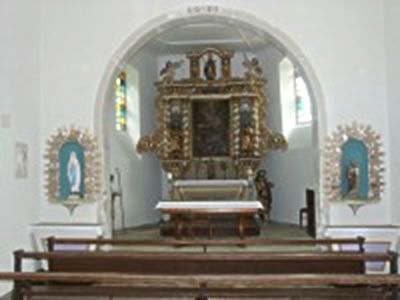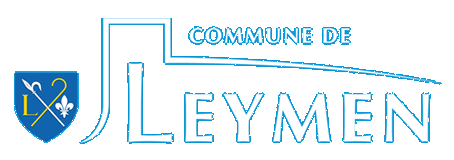A little history
It was not until 736 that the name of the town was mentioned for the first time. We find its trace in a document (cartulary of Murbach, deposited in the departmental archives of Colmar). One has to wait until the year 1245 to find a mention of the village in a new document.
The village undoubtedly played a very important role in monitoring communications to the south.
In the middle of the 13th century, he entered history under the bishops of Basel. Throughout the feudal period, it was part of the Holy Roman Empire of the Habsburg, passing successively to the Count of Ferrette, the Rötteln, the Munch and finally the Reich Reichenstein from the mid-fifteenth century.
During the Thirty Years War, the village of Leymen participated in the fight against the Swedes. On June 27, 1637, he was completely looted.
In 1663, under Louis XIV, Leymen passed to the Kingdom of France.
The Revolution
Taking advantage of the Revolution, the village forces the Reichenstein to yield to the commune the forest of the Eichwald. These negotiations were in the form of a lawsuit opposing the village to its lords. The village wins the case. However, having been partisan of the revolution, the Leymenois become victims. Some inhabitants were forced to emigrate. The pilgrimage of Our Lady of the Stone attracted the attention and hatred of the revolutionary authorities.
World War I
Spared during the Napoleonic Wars and the capture of the Landskron in 1813, the village was separated from the rest of Alsace during the 1914/1918 War. An electrified fence was built by the Germans on the heights of the Eichwald, between Rodersdorf and Benken. The mobilization touched 168 men, 30 never came back.
World War II
Located in front of the Maginot Line, the village is evacuated to the Landes, in Mauvezin d’Armagnac. Many escapes in Switzerland take place during the occupation. The deportations hit a dozen families. Four inhabitants are sent to concentration camp. Leymen is released on November 20, 1944.
Geography and heritage
Population: 1,162 inhabitants (legal population 2013 entered into force on January 1, 2016. It replaces the legal population 2012. Legal populations are updated each year)
Name of inhabitants: Leymenois
Area: 1,164 ha including about 400 ha of forest
Altitude: 374 m
Coat of arms: “Azure a spear of silver and a gold crosse posed in saltire, accosted to dexter of the letter L of gold and sinister of a fleur-de-lis of silver”.
Presentation of the municipality
The town of Leymen is located in the southeastern corner of Alsace, close to the Franco-Swiss border, in the Alsatian Jura, and more precisely at the foot of a wooded hill, with on its side a huge quarry, most exploited so far, and on its back the ruins of the castle Landskron. The municipality covers an area of 1,164 ha, of which about 400 are covered with forest.
The altitude of the town of Leymen varies from 347 to 559 meters. Its territory is crossed by the Birsig which will flow in the Rhine to Basel.
Its particular situation makes it say that this village is a French land enclaved in a foreign country.
Sa situation particulière fait dire que ce village est une terre française enclavée dans un pays étranger.

Touristic places/ sites of interests
The Landskron Castle:
The Landskron was erected during the last decade of the 13th century by the noble family of the Basel Munch. Damaged by the great earthquake of 1356, it was rebuilt and passed in 1461 in the hands of the Reichenstein Reich. In the 15th century, the region entered an area of tension between the great European powers and the Confederates. The Emperor Maximilian personally had the Landskron transformed into a fortress between 1515 and 1518.
From the old castle only remained the residential tower, turned into an artillery platform. The new buildings were characterized by walls thick up to 7 meters. But this defense technique was soon overcome by modern artillery. Moreover, the confederates of the time, paralyzed by religious quarrels, no longer threatened the frontier. After the Thirty Years War, the King of France acquired the rights of the Reichenstein Reichs and the Marquis of Baden, and turned the fortress into a garrison according to Vauban’s plans. In 1814, it was destroyed by the Bavarians and the Austrians, allied against Napoleon.
The ruin, passed into private hands, served as a quarry. In 1857, Reinach’s family put an end to these practices by buying the ruin. Since 1984, this historical monument is the property of the Franco-Swiss association Pro Landskron which has more than one thousand members. With the help of the State, the Regional Council and the General Council, important consolidation work has been undertaken in recent years.

Parish Church “Saint Léger”
The parish church is placed under the invocation of Saint Léger, which indicates the influence of the convent of Murbach, who provided with goods to Leymen in the 8th century.
But the current construction, surrounded by the cemetery, dates only from 1898, and the earlier, smaller church was not erected until 1717. It is a ground floor on solid ground, which covers 571 m2, with a tower of 5 floors.
Above the doors (3 main at the bottom of the church and the left side door), which are oak, you can see pediments. Outside, we see pilasters and cornices with denticles. Between the main nave and the lower sides, there are stone columns with capitals with acanthus leaves also in stone. The stained glass windows are in color. The high altar is carved oak with a central niche and four side niches. On the left is the altar of the Virgin, transformed into a cave of Lourdes to celebrate the centenary of the apparitions. On the right rises the altar of Saint Joseph; a brotherhood of Saint Joseph existed in 1688.
What is striking is the profusion of statues: Blessed Virgin and Saint Joseph, but also Saint Anthony (patron of the old chapel Landskron, taken over by the parish church after the destruction of the fortress), Saint Louis de Gonzague , Saint Joan of Arc, Saint Therese of the Child Jesus and a representation of the descent of the Cross.
Among the riches of the church, we must point out the organs and bells. The latter, four in number, are bronze. On a platform, which is accessed by a spiral staircase, deep down to the right on your way back, you will find the organ. This includes 20 registers, 2 hand keyboards and a pedal keyboard. Among these riches, we can still add the electric clock.

The Heiligenbrunn Chapel:
Heiligenbrunn, probably an old pagan place of worship, is a chapel with a source of healing virtues. It is placed under the name Walpurge (May 1st). The chapel is mentioned in 1359. The current construction dates from 1682; sold as national property under the revolution, the chapel was bought in 1812 by the town and returned to worship. Renovated in 1875, restoration work was undertaken in 1981 and 1990.
For many years, the association of the Heiligenbrunn Chapel has supported, with the help of various partners, the maintenance and renovation of this building. Throughout the year, various events are organized for this purpose.

The Chapel of the Souls of Purgatory:
Located in Landskron Street, it was built in 1928, at the initiative of Messrs Gonthier and Stupfler. The pilgrims who went to Mariastein regularly stopped at this chapel built to replace another chapel “Hermits” destroyed by the ravages of time.

